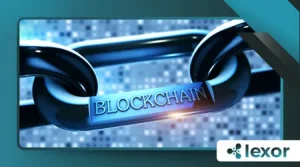How to Spot a Legit Blockchain Project

In the dynamic world of digital assets, mastering How to Spot a Legit Blockchain Project is essential, a necessary skill for astute participation.
Navigating this landscape, brimming with both innovation and peril, demands sharp critical analysis and informed scrutiny.
This article provides a comprehensive guide, drawing from expert knowledge to distinguish real value from mere hype.
A project’s foundation is built upon the people driving it and the network supporting it.
The development team’s expertise must be verifiable, boasting a proven track record in technology and business.
Look for transparency regarding their past achievements and qualifications.
A strong, engaged community provides an excellent barometer of a project’s future potential.
Look beyond mere token holders; seek out developers, legitimate users, and active contributors. The quality of dialogue in official channels speaks volumes about the ecosystem’s health.
Conversely, a project relying heavily on vague promises and anonymous profiles should raise immediate flags.
Credibility hinges on identifiable expertise and open communication, not on marketing smoke and mirrors.
How Can I Assess the Real-World Utility and Technology?

Blockchain is a solution seeking a problem, not a technology for its own sake. A legitimate project addresses a demonstrable, real-world pain point with a clear and effective use case.
Ask yourself: does this project truly need a distributed ledger to succeed?
A strong project offers technology that is scalable, secure, and genuinely innovative. Review the whitepaper for technical depth, not just buzzwords.
A vague technical description often masks a lack of substance or incomplete development.
++Using Augmented Reality to Teach Shapes and Colors
A crucial check involves inspecting the open-source code repository, typically found on platforms like GitHub.
Consistent updates, active development, and thorough documentation signal a healthy, working project, not a stagnant concept.
What Role Does Tokenomics Play in Project Viability?
The economic model, or tokenomics, is the project’s financial DNA.
Read more: What Is a Blockchain Explorer and How to Use It
Its structure should be transparent, logical, and designed to reward genuine, long-term participation, not purely speculative trading.
Is the allocation of tokens fair and well-distributed?
High inflation models or a disproportionate allocation to insiders can severely undermine the token’s value and the project’s stability.
A sustainable project minimizes hyper-inflation and ensures the token has intrinsic utility within the ecosystem.
++How Do NFTs Work and What Are They Used For?
For instance, consider a DeFi lending protocol where the token is necessary for governance and for securing the network through staking.
This mechanism is sound because the token’s value is directly tied to the platform’s usage and security. This is key to understanding How to Spot a Legit Blockchain Project.
How Does Regulatory Clarity Influence a Project’s Success?
As the crypto world matures in 2025, regulatory compliance is no longer optional; it is a critical prerequisite for long-term viability.
++10 SIGNS OF A SCAM CRYPTO OR FOREX TRADING WEBSITE
Projects that proactively engage with regulatory bodies and adhere to established frameworks demonstrate maturity and responsibility.
Regulatory ambiguity exposes a project to substantial existential risks, making it an unstable investment.
A willingness to comply signals a commitment to a sustainable future, attracting serious institutional investors.
Ignoring the evolving regulatory landscape is akin to building a house on quicksand. The most enduring projects actively seek legal clarity, ensuring their operations are robust against future changes.
What are the Key Signals of a Successful Blockchain Project?
Identifying success is about observing patterns of responsible development and adoption. Think of a blockchain project like a marathon runner.
The legitimate project focuses on consistent pace, training, and endurance (development, utility, community), while a scam is a sprinter focused only on a quick, unsustainable burst of speed (pump-and-dump).
The industry is rapidly segmenting, with maturity indicators becoming more apparent.
According to a 2024-2025 analysis on enterprise blockchain adoption, 87% of businesses surveyed plan to invest in blockchain solutions, but only 12% of projects managed to secure two or more funding rounds in 2024, highlighting a significant funding challenge for nascent ventures.
This statistic underscores the difficulty in translating initial hype into sustained financial backing and market fit.
Consider a Layer 2 scaling solution.
An authentic project will focus on measurable metrics like lower gas fees, increased throughput (transactions per second), and a growing number of integrated Decentralized Applications (dApps).
A fraudulent one merely promotes a skyrocketing price graph.
| Legitimacy Metric | Red Flag (High Risk) | Green Flag (Low Risk) |
| Team Disclosure | Anonymous or pseudonymous developers; vague credentials. | Publicly doxed, experienced team with verifiable backgrounds. |
| Code Activity | Stagnant GitHub repository; un-audited or closed-source code. | Consistent, audited, and open-source code updates. |
| Token Utility | Token’s sole purpose is speculation; high percentage allocated to insiders. | Clear, intrinsic utility (governance, staking, fees); fair distribution. |
| Product Status | Promises only; no working product or functional testnet. | Working mainnet or robust testnet; documented real-world adoption. |
| Marketing Style | Focus on guaranteed returns, fear of missing out (FOMO); incessant hype. | Focus on technical milestones, partnerships, and user adoption metrics. |
Another compelling example is a project focused on Real-World Asset (RWA) tokenization.
A legitimate venture partners with established financial institutions and adheres to strict security standards.
A fraudulent one might offer unrealistic, guaranteed returns on illiquid assets, using zero verifiable legal documentation. This highlights How to Spot a Legit Blockchain Project.
How to Spot a Legit Blockchain Project in a Crowded Market?
The ultimate test for How to Spot a Legit Blockchain Project is the marriage of verifiable fundamentals and a dedicated community.
Ignore the noise of short-term price movements and concentrate on intrinsic value.
Does the project contribute meaningful technological advancement, or is it just creating another version of what already exists?
Always prioritize due diligence: look for audits by reputable security firms, review official documentation carefully, and evaluate the clarity of the roadmap.
In an arena where only the resilient thrive, a project’s true legitimacy is revealed by its sustained commitment to building, not merely selling.
Are you investing in a technology, or just a ticket in a lottery?
Frequently Asked Questions
Q: What is the single most important factor to check first?
A: The most important initial check is the team’s transparency and track record. Verifiable experience reduces the risk of outright fraud and indicates a capacity for execution.
Q: Should I worry if a project’s price is highly volatile?
A: Volatility is common in the crypto market, but excessive volatility without a corresponding change in the project’s fundamentals or adoption is a red flag, often indicating speculative trading over genuine use.
Q: What does a “robust whitepaper” really mean?
A: A robust whitepaper is a detailed document that clearly outlines the problem, the blockchain-based solution, the specific technology and architecture used, and the economic model (tokenomics) in a technically sound and coherent manner.
Q: What is a “rug pull” and how can I avoid it?
A: A “rug pull” is a malicious maneuver where developers abandon a project and disappear with the investors’ funds. To avoid this, look for locked liquidity, public team identities, and external code audits.
